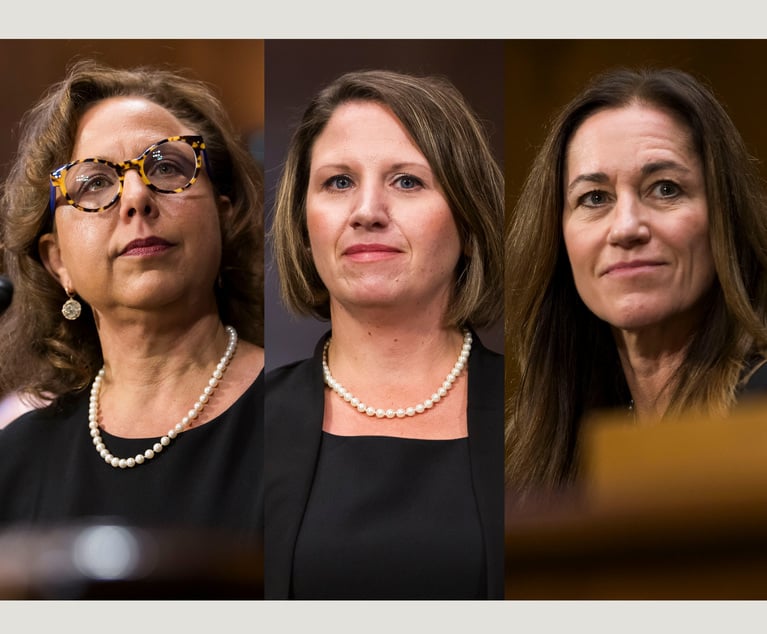Authenticity of Digital Evidence: Pa.'s Rules Differ From Federal Rules
With the May 20 announcement and Pennsylvania Supreme Court's "final report" as to the amendment of Rule 901, Subsection 901(b)(11), which summarizes how to "connect digital evidence with a person or entity," was added to Pennsylvania Rule 901, effective Oct. 1. In this month's column, I discuss the significance of the amendment to Pennsylvania Rule 901.
June 25, 2020 at 12:15 PM
12 minute read
 Leonard Deutchman
Leonard Deutchman
Until May 20, when Pennsylvania announced that changes to its Rule of Evidence 901 would be effective as of Oct. 1, federal and Pennsylvania's Rule of Evidence 901, "Authenticating or Identifying Evidence," were identical. Rule 901(a) provides a general section to describe how to satisfy the requirement of authenticating or identifying an item of evidence; the proponent must produce evidence sufficient to support a finding that the item is what the proponent claims it is. Rule 901(b) provided 10 generalized examples "of evidence that satisfies the requirement" that evidence must be authenticated or identified to be admissible. With the May 20 announcement and Pennsylvania Supreme Court's "final report" as to the amendment of Rule 901, Subsection 901(b)(11), which summarizes how to "connect digital evidence with a person or entity," was added to Pennsylvania Rule 901, effective Oct. 1. In this month's column, I discuss the significance of the amendment to Pennsylvania Rule 901.
Authentication of Digital Evidence
Both the federal and Pennsylvania's Rule of Evidence 901 are titled, "Authenticating or Identifying Evidence." More importantly, both begin with Subsection (a), titled "In General." Subsection (a) reads: "To satisfy the requirement of authenticating or identifying an item of evidence, the proponent must produce evidence sufficient to support a finding that the item is what the proponent claims it is," and then gives a list of examples—described as "examples only—not a complete list" of evidence that, per the rules, "satisfies the requirement." That list includes: the "testimony of a witness with knowledge;" a nonexpert's opinion "that handwriting is genuine, based on a familiarity with it that was not acquired for the current litigation;" a "comparison with an authenticated specimen" of the type of evidence in question "by an expert witness or the trier of fact;" the "appearance, contents, substance, internal patterns, or other distinctive characteristics" of the item at issue, "taken together with all the circumstances;" an opinion identifying a "person's voice—whether heard firsthand or through mechanical or electronic transmission or recording—based on hearing the voice at any time under circumstances that connect it with the alleged speaker;" evidence that a telephone call "was made to the number assigned at the time" either to "a particular person, if circumstances, including self-identification, show that the person answering was the one called," or "a particular business, if the call was made to a business and the call related to business reasonably transacted over the telephone;" evidence that "a document was recorded or filed in a public office as authorized by law," or "a purported public record or statement is from the office where items of this kind are kept;" a document or data compilation "is in a condition that creates no suspicion about its authenticity," "was in a place where, if authentic, it would likely be," and "is at least 20 years old when offered;" evidence "describing a process or system and showing that it produces an accurate result;" and, any "method of authentication or identification allowed by a federal statute or a rule prescribed by the Supreme Court."
On Oct. 1, PA R.E. 901(b)(11), titled "Digital Evidence," will take effect. Under this subsection, to "connect digital evidence with a person or entity," the trier of fact must note "direct evidence such as testimony of a person with personal knowledge" or "circumstantial evidence such as identifying content" or "proof of ownership, possession, control, or access to a device or account at the relevant time when corroborated by circumstances indicating authorship."
Several factors regarding the new Subsection 901(b)(11) are important. Most important is that, as with all factors in Subsections 1 through 11, none of those factors must be proved for the trier of fact to accept as true a matter at issue. Rather, the factors are set out to provide guidance to the trier of fact as to how to interpret evidence. While that evidence, as listed in the subsections, can be presented to the trier of fact and justify the trier's decision as to what of relevance took place in the matter at hand, nothing in the rules (or elsewhere) requires the evidence to comply with the subsections for it to be sufficient to sustain a burden of proof or even be acceptable to the trier of fact. The proponent following the demands of subsection 901(b)(11) must, in order to "connect digital evidence with a person or entity," provide the trier of fact with either "direct evidence such as testimony of a person with personal knowledge," or "circumstantial evidence" such as "identifying content" or "proof of ownership, possession, control, or access to a device or account at the relevant time when corroborated by circumstances indicating authorship."
Reviewing Subsection 11, the question arises as to why the Pennsylvania Supreme Court thought it was necessary to add it to Pa.R.E. 901. An exploration of that question may lead to interesting answers, but none of them are particularly satisfying. For many years, Pennsylvania has managed its affairs without Subsection 11, and neither case law nor the experience of litigators has led to a widely accepted decision that Subsection 11 was needed to resolve litigation issues. Indeed, review of Subsection 11 reveals that it simply summarizes what has been universally accepted law with regard to digital evidence, and to all similar evidence (evidence of talking, writing or otherwise expressing ideas) since such evidence has been produced and offered in court, i.e., for as long as can be remembered. Subsection 11 simply instructs that "direct evidence," such as "testimony of a person with personal knowledge," as well as "circumstantial evidence" such as a witness who can identify the content of digital evidence or produce "proof of ownership, possession, control, or access to a device or account at the relevant time when corroborated by circumstances indicating authorship" are acceptable means to prove authorship of the digital evidence. Pennsylvania has not had a problem in introducing such evidence, and neither have the federal courts, which will continue to enforce F.R.E. 901, which is identical to Pa.R.E. 901 save for the latter adding Subsection 11.
Further review of Subsection 11 reveals that the factors set forth in the new subsection for justifying admission of digital evidence have already been the accepted factors for establishing admissibility. The "testimony of a person with personal knowledge" that a certain person or entity wrote, spoke or otherwise uttered any utterance, including spoken words or digital evidence, has always been sufficient to establish the authenticity of the utterance. Similarly, evidence to which a witness can attest that a subject owns, possesses, controls or accesses a device or account at the relevant time that contains and puts forth digital evidence has sufficed to prove the digital evidence to be authentic. Absent Subsection 11, the logic underscoring the Subsection would still be sufficient to make the digital evidence admissible, as it has been admissible since digital evidence has become important to litigation. Thus, it is not immediately clear why the Pennsylvania Supreme Court promulgated Subsection 11.
It is possible that Subsection 11 was enacted as a result of the coronavirus pandemic. All or the vast majority of Pennsylvania courts, like most courts, have been shut down for months and months, leaving judges with little to do save for visiting issues that they hadn't the time to review when the volume of cases was so great that courts simply did not have the time to visit such issues. One of those issues was whether and when parties attempting to introduce digital evidence needed the testimony of expert witnesses to do so. It may be easy to understand that, many years ago, when digital evidence—first just email, now email and texts; photos; Word, Excel, Adobe PDFs, telephone calls and other recordings, etc.—as "evidence" required schooling the trier of fact as to what a computer was, how applications worked, and so on. Over the years, however, such lessons have been needed less and less. When the pandemic struck and court systems turned to the digital world to aid it in turning in-person legal proceedings to "virtual" ones conducted via computer—using Zoom and similar group discussion applications to replicate courtroom and other legal activities—the legal world was surprised at just how digitally literate it had become over the past 15 to 20 years, and was sparked to apply its newly recognized digital knowledge throughout the legal world.
One of the questions the legal world found itself having to answer in light of its growing knowledge of digital devices and evidence is when expert testimony was needed to have digital evidence introduced. Subsection 11 does not provide such a list; rather, it simply articulates those relatively common situations where, early on in the digital revolution, experts were required and, even if not, almost always used to authenticate relatively common digital evidence. In practice prior to Subsection 11 taking effect, and then certainly after Subsection 11 becomes law in October, more and more digital evidence will be introduced not through experts but rather through witnesses who came in contact with that evidence, such as persons who received texts, emails or cellphone messages.
Even if Subsection 11 changes or finalizes (at least in Pennsylvania) whether or when expert testimony is needed to introduce digital evidence, and even if those changes or that finalization establishes that such expert testimony is rarely, if ever, needed, triers of fact may still frequently hear from expert witnesses regarding the subjects, for the simple reason that expert testimony may be more convincing. Experts can explain how digital applications and the devices using them work. A good expert can testify in a way that combines an open and friendly affect with arcane knowledge of the digital world so as either to remove any doubt, however remote, the trier of fact may have as to the meaning and admissibility of the digital artifact or, conversely, to create such doubts when, prior to the expert's testimony, it did not even occur to the trier of fact that there could be an issue as to who created and sent the digital artifact, what it means, and so on. Thus, even if Subsection 11 is adopted on the federal level and by the other 49 states, triers of fact may still be greeted with expert testimony put forth by parties who determine that the use of experts strengthens their cases.
Conclusion
The addition of Subsection 11 to Pennsylvania Rule of Evidence 901 that previously was identical to the Pennsylvania rule, raises almost as many questions as it provides answers. Subsection 11 makes it clear that an expert in digital communications is not necessary to present evidence of such communications, particularly of their source and authenticity. Perhaps the absence of that clarification when Subsection 11 was not in place led to confusion on that point; perhaps that absence was the result of an evolving philosophy regarding the presentation of evidence of the source and authenticity of digital communications, a philosophy which fell together as use of digital communications devices during the instant pandemic made it clear that the average user knows much, much more about digital devices and communications than he or she did going back the last twenty years, when digital devices and communications became popular. Regardless, Subsection 11 will make the presentation of evidence in Pennsylvania to the trier of fact of digital communications easier and less subject to challenge on the basis of authenticity and scientific reliability.
Interestingly, the addition of Subsection 11 may not actually reduce the amount of testimony we see when parties seek to introduce digital communications. Litigators familiar with litigating issues involving digital communications will agree that the use of experts—not those who get tied up in their own answers, but they who can present complex ideas in simple ways and so make those ideas clear to triers of fact without diminishing their importance or technical difficulties—can, and very often does, mean the difference between winning and losing. The goal of litigating is to win, and no litigator wants to lose because a trier of fact got lost in the minutiae of a topic which must be understood but whose minutiae, while often requiring some schooling, is by no means too complex to understand. Thus, the litigator offering evidence involving digital communications will want it presented by someone who understands that evidence well enough and can speak clearly enough to address all of the ins and outs of the evidence but can do so in language so devoid of esoteric terminology as to make the expert witness' testimony straightforward and easy to understand. Subsection 11 certainly does not require that litigators present such witnesses, but it allows for that presentation and contemplation of its very presence. The opportunity to better one's understanding by preparing and calling to testify someone who understands digital communications deeply but can describe them in common terms to the trier of fact may be so irresistible that the absence, clear in Subsection 11, of a requirement that such an expert be called to introduce evidence of digital communications will do nothing to introduce how often such witnesses are called.
Leonard Deutchman is a legal consultant retired from one of the nation's largest e-discovery providers, KLDiscovery, where he was vice president, Legal. Before joining KLDiscovery, he was a chief assistant district attorney at the Philadelphia District Attorney's Office, where he founded the Cyber Crime Unit and conducted and oversaw hundreds of long-term investigations involving cyber crime, fraud, drug trafficking and other offenses.
This content has been archived. It is available through our partners, LexisNexis® and Bloomberg Law.
To view this content, please continue to their sites.
Not a Lexis Subscriber?
Subscribe Now
Not a Bloomberg Law Subscriber?
Subscribe Now
NOT FOR REPRINT
© 2025 ALM Global, LLC, All Rights Reserved. Request academic re-use from www.copyright.com. All other uses, submit a request to [email protected]. For more information visit Asset & Logo Licensing.
You Might Like
View All
Pa. Federal District Courts Reach Full Complement Following Latest Confirmation

The Defense Bar Is Feeling the Strain: Busy Med Mal Trial Schedules Might Be Phila.'s 'New Normal'
7 minute read
Federal Judge Allows Elderly Woman's Consumer Protection Suit to Proceed Against Citizens Bank
5 minute read
Judge Leaves Statute of Limitations Question in Injury Crash Suit for a Jury
4 minute readTrending Stories
- 1Troutman Pepper, Claiming Ex-Associate's Firing Was Performance Related, Seeks Summary Judgment in Discrimination Suit
- 2Law Firm Fails to Get Punitive Damages From Ex-Client
- 3Over 700 Residents Near 2023 Derailment Sue Norfolk for More Damages
- 4Decision of the Day: Judge Sanctions Attorney for 'Frivolously' Claiming All Nine Personal Injury Categories in Motor Vehicle Case
- 5Second Judge Blocks Trump Federal Funding Freeze
Who Got The Work
J. Brugh Lower of Gibbons has entered an appearance for industrial equipment supplier Devco Corporation in a pending trademark infringement lawsuit. The suit, accusing the defendant of selling knock-off Graco products, was filed Dec. 18 in New Jersey District Court by Rivkin Radler on behalf of Graco Inc. and Graco Minnesota. The case, assigned to U.S. District Judge Zahid N. Quraishi, is 3:24-cv-11294, Graco Inc. et al v. Devco Corporation.
Who Got The Work
Rebecca Maller-Stein and Kent A. Yalowitz of Arnold & Porter Kaye Scholer have entered their appearances for Hanaco Venture Capital and its executives, Lior Prosor and David Frankel, in a pending securities lawsuit. The action, filed on Dec. 24 in New York Southern District Court by Zell, Aron & Co. on behalf of Goldeneye Advisors, accuses the defendants of negligently and fraudulently managing the plaintiff's $1 million investment. The case, assigned to U.S. District Judge Vernon S. Broderick, is 1:24-cv-09918, Goldeneye Advisors, LLC v. Hanaco Venture Capital, Ltd. et al.
Who Got The Work
Attorneys from A&O Shearman has stepped in as defense counsel for Toronto-Dominion Bank and other defendants in a pending securities class action. The suit, filed Dec. 11 in New York Southern District Court by Bleichmar Fonti & Auld, accuses the defendants of concealing the bank's 'pervasive' deficiencies in regards to its compliance with the Bank Secrecy Act and the quality of its anti-money laundering controls. The case, assigned to U.S. District Judge Arun Subramanian, is 1:24-cv-09445, Gonzalez v. The Toronto-Dominion Bank et al.
Who Got The Work
Crown Castle International, a Pennsylvania company providing shared communications infrastructure, has turned to Luke D. Wolf of Gordon Rees Scully Mansukhani to fend off a pending breach-of-contract lawsuit. The court action, filed Nov. 25 in Michigan Eastern District Court by Hooper Hathaway PC on behalf of The Town Residences LLC, accuses Crown Castle of failing to transfer approximately $30,000 in utility payments from T-Mobile in breach of a roof-top lease and assignment agreement. The case, assigned to U.S. District Judge Susan K. Declercq, is 2:24-cv-13131, The Town Residences LLC v. T-Mobile US, Inc. et al.
Who Got The Work
Wilfred P. Coronato and Daniel M. Schwartz of McCarter & English have stepped in as defense counsel to Electrolux Home Products Inc. in a pending product liability lawsuit. The court action, filed Nov. 26 in New York Eastern District Court by Poulos Lopiccolo PC and Nagel Rice LLP on behalf of David Stern, alleges that the defendant's refrigerators’ drawers and shelving repeatedly break and fall apart within months after purchase. The case, assigned to U.S. District Judge Joan M. Azrack, is 2:24-cv-08204, Stern v. Electrolux Home Products, Inc.
Featured Firms
Law Offices of Gary Martin Hays & Associates, P.C.
(470) 294-1674
Law Offices of Mark E. Salomone
(857) 444-6468
Smith & Hassler
(713) 739-1250





